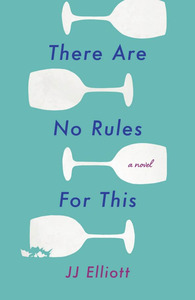“This character is going to kill themself.”
Ask my husband how many times I’ve said that to him while we watched a movie or show, only for him to turn to me astonished when it happens and say, “How did you know?”
I know because I can see the plot points being set up like dominos that will eventually fall neatly, leaving us, the viewers, able to feel like we understand why it happened.
I also know this isn’t how suicide plays out in real life. There’s rarely a reason with a capital R. And in real life, the people left behind almost never understand.
My mother died by suicide when I was 17. (Note I didn’t say committed. Suicide is no longer a crime in this country, although it still is in many others, which doesn’t help with the stigma.) It left me desperately wanting to understand. I read the books, did the therapy, and answered the suicide hotlines late at night once a week for a couple of years. Most of the conversations I had on the hotlines lasted well over an hour. While I still don’t understand, here’s some of what I learned.
I learned that most people who are suicidal don’t actually want to die, they want to escape the prison of pain they’re facing in the immediate moment. Death can feel like a key, sometimes the only one.
On the hotlines we would ask, “Have you ever felt this way before?” The answer was usually yes. “What did you do to help yourself then?”
Sometimes it was as simple as suggesting taking a walk, running a bath, talking to a friend or sibling, snuggling a pet. People didn’t call us for the answers to their mental health problems, they called to be helped out of a moment of crisis. Most times, both sides of the conversation hung up the phone relieved.
In my novel, There Are No Rules For This, one of the main characters, Feeney, dies by suicide. (This isn’t a spoiler, it happens right smack in the first chapter.) The rest of the novel toggles between present day when Feeney’s best friends are grappling with their grief, and flashbacks of happier times together.
Way back at the beginning of my publishing journey, I did things the way I was supposed to. I queried, and queried … and queried. Then, the heart-stopping strike on the line—I got a few interested parties all at once. The agent that won me over was warm, enthusiastic, wonderful, and British. (Is there any better combination?) She felt confident that my novel would be picked up and published, and had lots of thoughts about who to approach. She was the real deal, and I trusted her instinct implicitly.
What came next was a string of the most lovely “no’s” imaginable. Ironically, some of the best compliments I’ve ever received about my writing came in the form of rejections from editors. It was like being kissed and kicked by a celebrity at the same time. “JJ is one of the best new writers I’ve read, but …” or “I fell madly in love with these characters but …” Much of the feedback was scattershot—too commercial, too literary, too funny, too sad. It was hard to find a thread I could pick up and sew with.
My novel doesn’t explain suicide. It doesn’t offer answers. Instead, it depicts the reality of what happens to the people left behind.
The one common through line that my agent and I could tease out, however, was a desire to make the suicide a bigger plot point. At first, I didn’t get it. The entire novel deals with the aftermath of a suicide, isn’t that a plot point? Eventually I understood that what the editors were looking for was a silver bullet. A reason with a capital R that makes everything make sense. The suicide version of a smoking gun.
Knowing what I know, living through what I did, I couldn’t do it. I actually tried, and it made me physically uncomfortable. This novel was too personal, too close to home, for me to make it anything other than 100% authentic to what I knew about suicide. Which, I’m the first to say, is only a little bit. But probably more than most.
After a lot of thought and stomach aches, I amicably parted ways with the still wonderful and enthusiastic British agent and submitted my novel to the hybrid publisher She Writes Press. Within a matter of weeks, She Writes had green-lighted my novel and added me to their Spring 2023 author list. And they didn’t ask me to change a thing.
My novel doesn’t explain suicide. It doesn’t offer answers. Instead, it depicts the reality of what happens to the people left behind. Unbearable grief, unanswerable questions, and uncertainty about how to move on. In the case of my novel, the characters decide to hold their own funerals while they’re still alive, so they never have to experience again the tragedy of not saying what they want to say to a loved one.
I love a good plot twist or surprise reveal as much as anyone. But there are some subjects that deserve to be treated more authentically when it comes to storytelling. Suicide is one of them. Rushing to find a motive in the wake of a suicide trivializes the life of the person who is gone, and sidesteps what drove them to feel like there was no other way out.
It’s satisfying to fit a lid on a box and place it away somewhere neat and tidy. I realize that some readers may not like the fact that my novel doesn’t answer the bigger questions. I’m okay with that. Because I think it’s more important to prompt smaller ones. Ones that don’t begin with “why,” but rather “how.” How are you doing right now? How’s your mental health? How are you coping? How are you saving your own life in small ways, every day? How can I help?
I’ve been told by readers that after reading my book, they think differently about their friendships. They listen more and ask more questions. They don’t necessarily take “fine” as an answer when it’s clear that it’s not true. They love more fully and more presently. And they say “I love you” more often.
To me, that feels like saving a life.
*
If you’re thinking about suicide, are worried about a friend or loved one, or would like emotional support, the Lifeline network is available 24/7 across the United States by texting or calling 988.
__________________________________

JJ Elliot is the author of There Are No Rules for This, available from She Writes Press.
